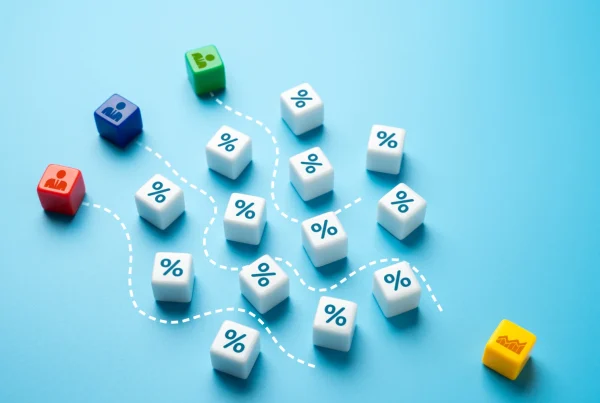Many retailers have reported an increase in their inventory levels by as much as 40% over last year. The CEO of a large US-based retailer recently warned investors that margins would contract over the next few quarters, with some lifestyle retailers already reporting losses. With working capital locked in excess inventory and warehouses already full, retailers are often forced to offer deeper discounts, which may adversely impact margins and chip away at profits.
While issues like long product development cycles, lack of containers, and port blockages are all contributing to this challenge, the inability to accurately forecast retail demand at a granular level is often at the root of the problem when it comes to excess inventory.
Addressing issues related to long product development cycles and creating more efficiencies will require deeper collaboration with stakeholders across the supply chain. However, improving the accuracy of demand forecasts is low-hanging fruit that can be readily addressed by giving merchants and planners the right tools with powerful AI-driven models to account for new and ever-changing variables.
Here are 4 reasons why moving away from traditional demand forecasting methods and investing in modern best practices is imperative:
-
Demand and supply is highly volatile, so forecasting using traditional tools is a nightmare!
Consumer confidence has been volatile. The consumer confidence index (CCI) which peaked in April 2021 at 99.9 has been rapidly falling with the index dropping to as low as 95.6 in June 2022. Inflation is at levels not seen in recent years across the globe. As inflation eats into monthly household budgets, consumers are increasingly cautious with their spending preferences. Trends are changing in categories like athleisure wear and home improvement, which were in high demand during 2021, now seeing a decline in consumer interest. The supply has been equally volatile with localized lockdowns and full-to-capacity containers, increasing the already stretched lead times for production.
With competitive market dynamics, consumer preferences, product styles, and rapidly changing trends, relying on historical data alone to accurately forecast future demand no longer works. Weighing a broader range of data parameters from a mix of sources that impact demand in the retailers’ business context is key to improving forecast accuracy. Sophisticated AI-led demand forecasting systems consider both external factors (macro-economic factors like inflation, CCI, weather data, mobility data, etc.) and internal factors (lost sales, marketing spends, promotions, etc.). By identifying the impact of all these factors on different customer segments, retail demand planning systems can generate more accurate forecasts at a granular level to deliver on consumer demands across digital and physical channels.
-
Want to improve pricing and allocation? Focus on improving demand forecasting accuracy, which impacts everything downstream.
Excess inventory locks up working capital and impacts sales margins due to higher shipping and storage costs, which are often followed by increased markdowns. Limited working capital keeps merchants and planners from investing in new products and fast-moving items, resulting in lost opportunity. However, retailers can better protect and stabilize margins by focusing on longer-term demand visibility while being agile in the short term. Retail demand forecasting systems must be tightly coupled with assortment, allocation, and pricing systems. Improved forecast accuracy has a direct and cascading impact on key metrics such as margin, sell-through rate, and fill rate.
By making millions of computations based on myriad of factors such as the latest trends, styles, macroeconomic data and predicting demand at a granular level, retailers have improved the visibility of demand over a longer term and plan their assortment accordingly. With a curated assortment at the Store-SKU-Size level based on customer preferences, retailers will be able to maintain the desired sell-through rate without compromising on the pricing across the product life cycle.
The demand forecasting engine should be flexible enough to pick up signals based on micro local factors and low frequency events (such as a harsh weather scare or competitor store shutdowns) and provide a revised forecast over the short term to support tactical decisions across pricing and allocation systems. The allocators can decide if the allocation should be modified based on the revised forecast across different channels. It will not just increase the margins but also boost the customer satisfaction due to improved fill rates.
-
Shed the “based on last year” approach! Adopt a modern forecasting system to reduce your carbon footprint and be a more sustainable retailer.
Using the traditional “based on last year” approach to forecasting, can result in the overbuying and underselling of goods. This impacts profitability due to excessive markdowns while also placing undue pressure across the supply chain to impact manufacturing, shipping, storage, and logistics. Sadly, most unsold goods are either destroyed or end up in landfills. Meanwhile, consumers are becoming increasingly conscious of the brands and retailers they choose. In fact, roughly 42% of US consumers are willing to pay a premium for environmentally sustainable products.
AI-powered demand forecasting systems that consume and interpret data from numerous sources can more accurately predict the demand for goods at a SKU-day-store level to reduce wastage and improve environmental sustainability. With advanced techniques like style chaining, these systems can more accurately predict the demand for short lifecycle products as well. Drift analysis allows these models to give higher importance to the most recent observations and discard obsolete patterns, aligning forecasts with the most recent customer preferences.
Using IA’s ForecastSmart, retailers can eliminate wastage by as much as 6% while substantially reducing the time required to plan.
-
AI-led retail demand planning and forecasting systems are not black boxes.
Traditional forecasting models act as a black box for planners. While the models make it easier by reducing manual effort, the “why” or the rationale behind the decision isn’t made clear. This creates a trust deficit. Bias creeping into the decision making due to the underlying data was a risk in adopting these models. Explainable AI, on the other hand, helps to build trust with the decision maker by providing the data and reasoning behind the result. It reveals which factors in the model (along with their impacts) contributed to the forecasting decision. As a result, explainable AI-based forecasting models are quickly accelerating adoption with retail planners.
How does Impact Analytics help?
Our robust predictive analytics takes millions of data points into account across myriad variables such as seasonality, inflationary pressures, price elasticity, supply chain challenges, customer demand and more, to provide actionable insights around assortment, allocation, pricing, and overall financial planning.
Whether it’s improving long-term demand visibility or responding to short-term demand fluctuations with agility and confidence, Impact Analytics has a powerful suite of solutions that will transform your business. Learn how to start producing highly accurate demand forecasts today. NextGen AI-Powered Retail Demand Forecasting Solution – ForecastSmart





